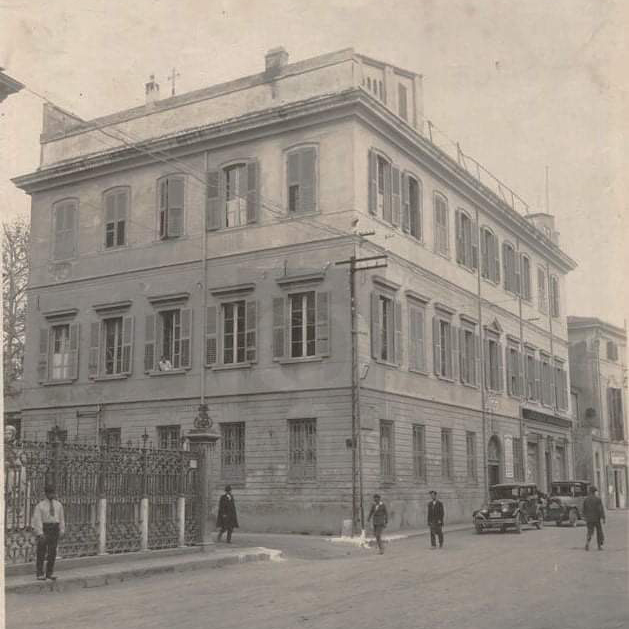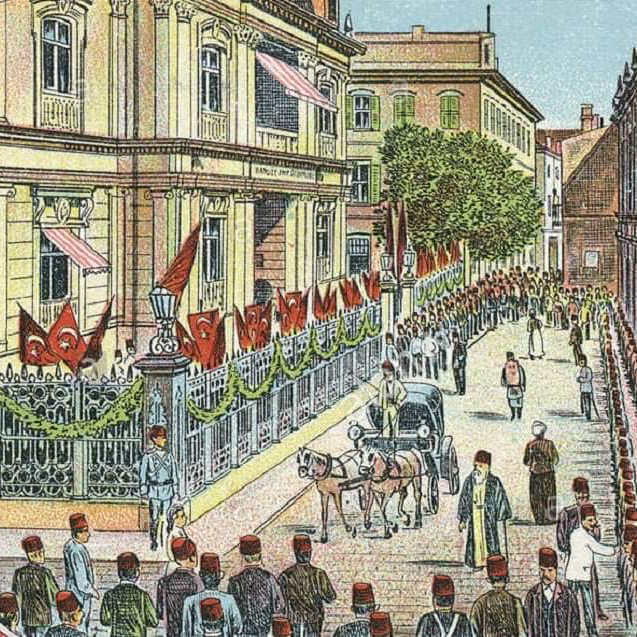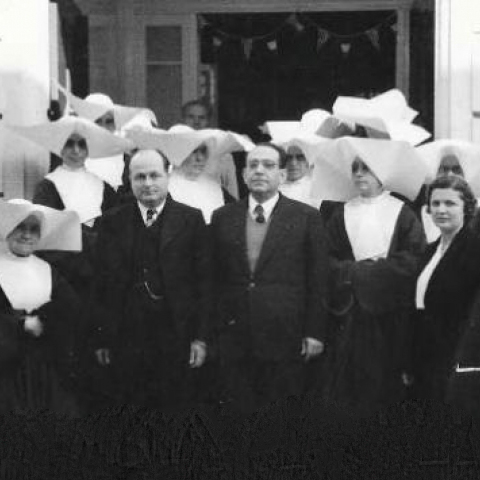Historical review
Let's transport ourselves here, to the heart of Thessaloniki in 1855. Four nuns of Mercy from France, prompted by the Lazarists, decide to establish in this very building a school for orphans and a nursery. With the support of the Parish and the French Embassy, they organize a Health Center. The Health Center evolves into a hospital with ten beds, named “Agios Vikentios" (Saint Vincent). The number of nuns increases from four to twenty, and a three-story building is established under the supervision of a surgeon and a general physician. The “French Hospital," as it becomes known later on, in a time of great poverty where diseases decimate the population, becomes an emblematic care center. A space of healthcare, a space of social contribution. Before World War II, it is requisitioned by the Greek Government and subsequently appropriated by the Germans. During the bombings, the building is set ablaze for eight consecutive days, and finally, with the assistance of the French Embassy, the damages are restored, and it resumes operations in November 1949. The final addition to the building takes place in 1968. The French Hospital provides its services until 1997 when it falls into disuse.
We didn't just restore a building, but we revived its heartbeat. This decision was driven by the building's rich history that we chose to carry forward. Recognizing its intrinsic spirit and purpose, we made a conscious effort to preserve them.
In one part of the complex, a modern luxury hotel was restored. The second part was transformed into a modern center for the hospitality and care of elderly people, with single, double, triple, and quadruple rooms. It includes a Holistic Care Unit with specially designed and studied shared spaces to accommodate entertainment and engagement programs for the residents.
We keep a promise, continuing a vision, reviving the soul and the original purpose of this building.
The third part of the complex is currently under construction, as the foundation and the supporting structure have already been completed. It will house a Modern Traumatology Center.
We believe that this complex will enhance the entire surrounding area, where prominent buildings such as the State Conservatory of Thessaloniki, the Roman Catholic Church, the Stock Exchange Square, and the Malakopi Arcade Building, which housed the first bank in Thessaloniki and whose pediment is adorned with the clock that stopped when the earthquake struck the city in 1978, dominate.


